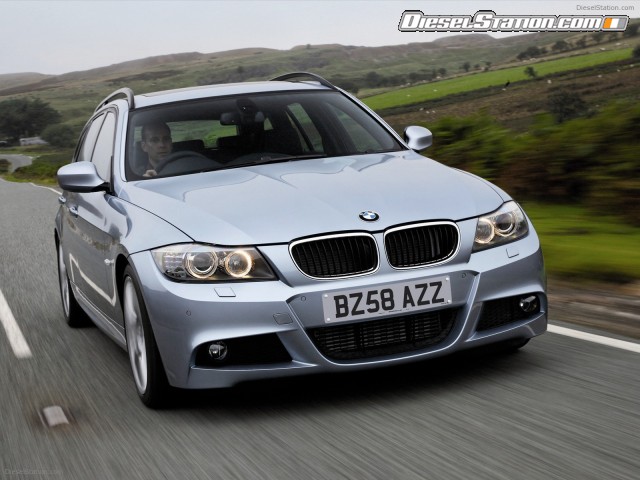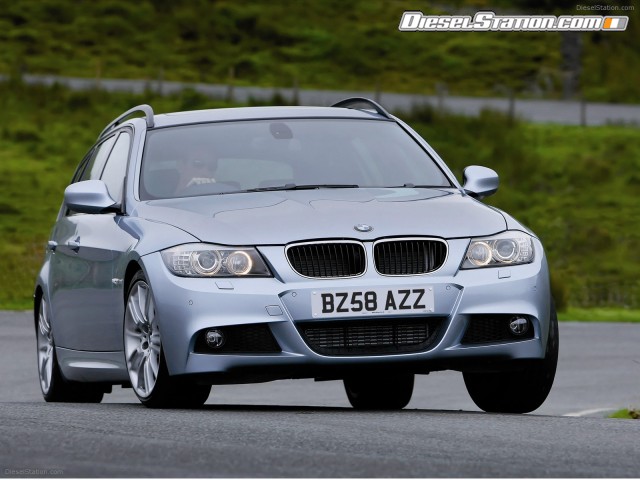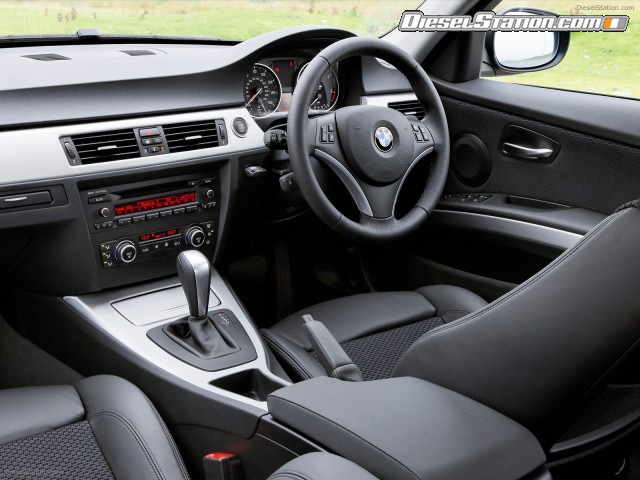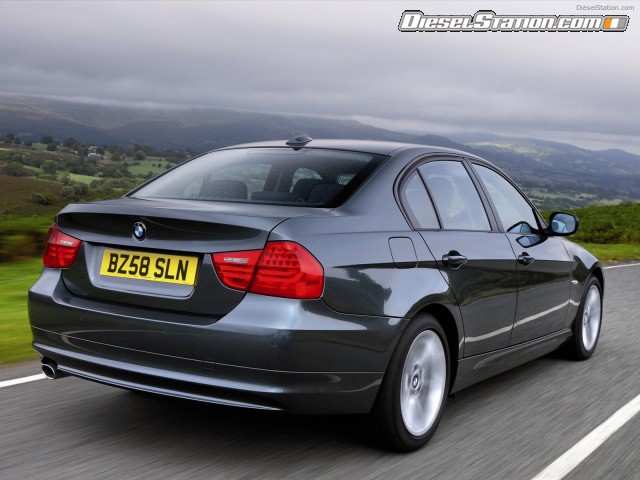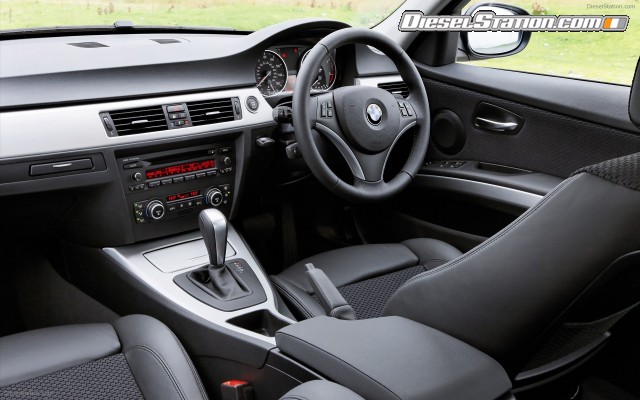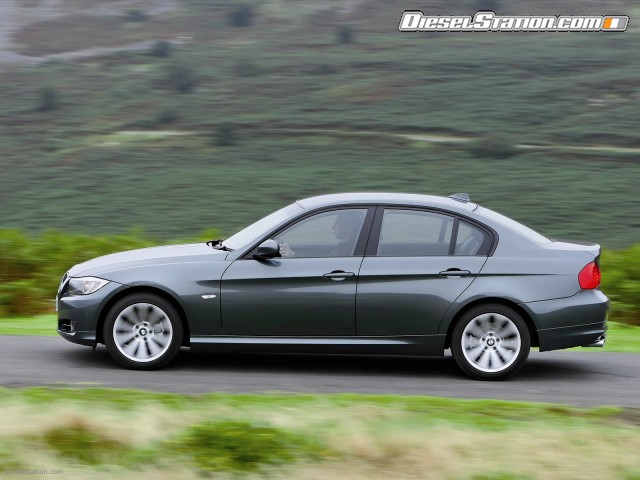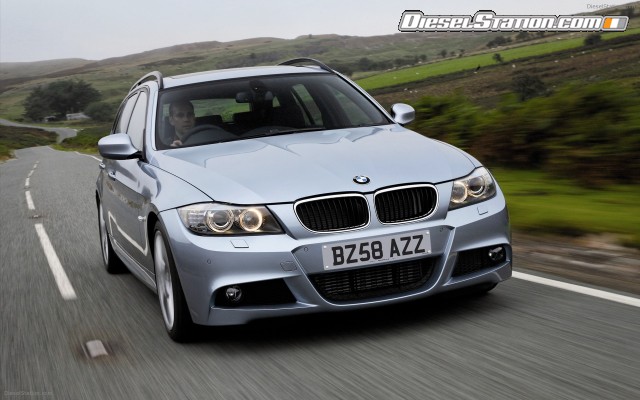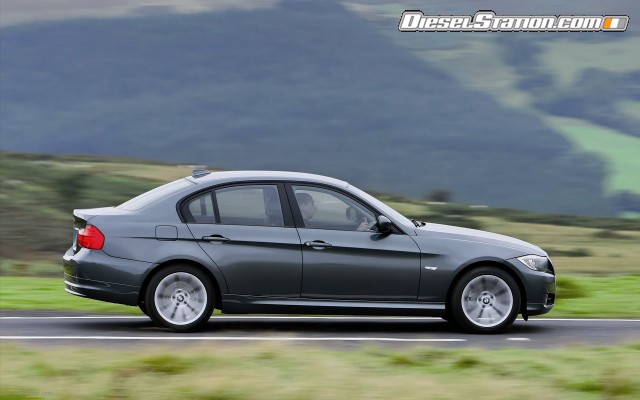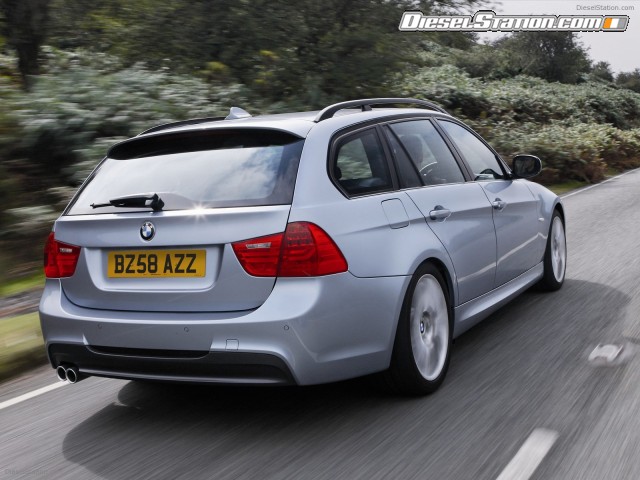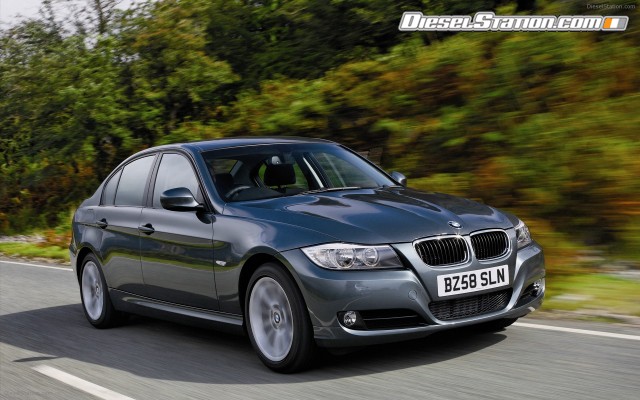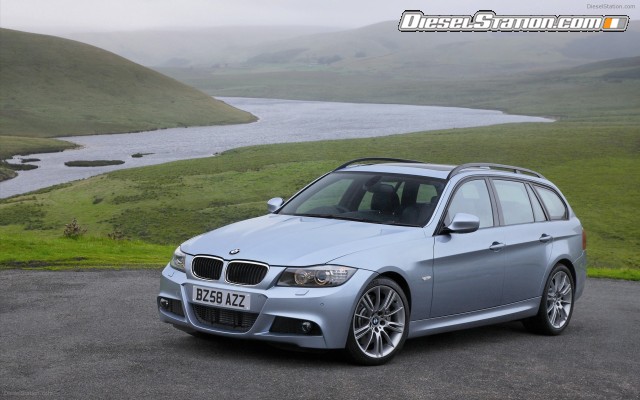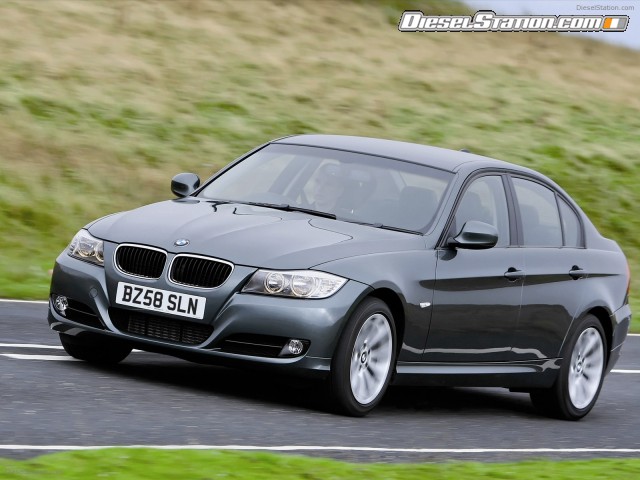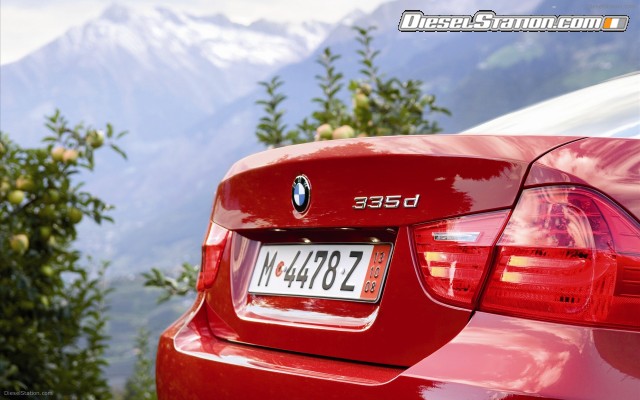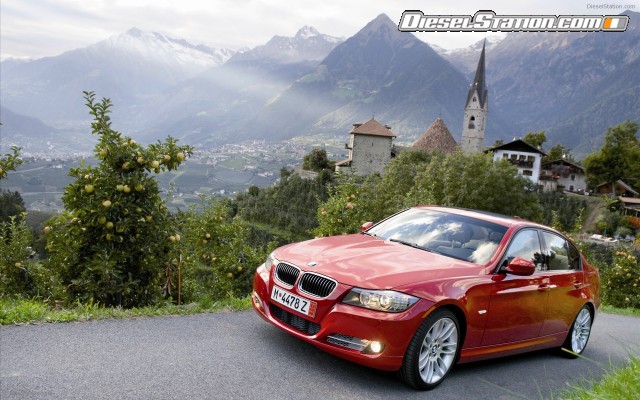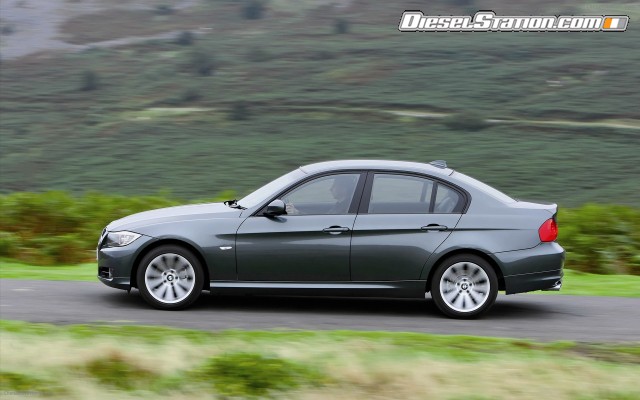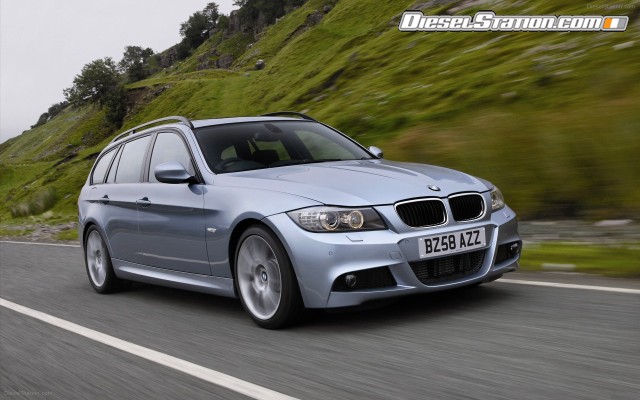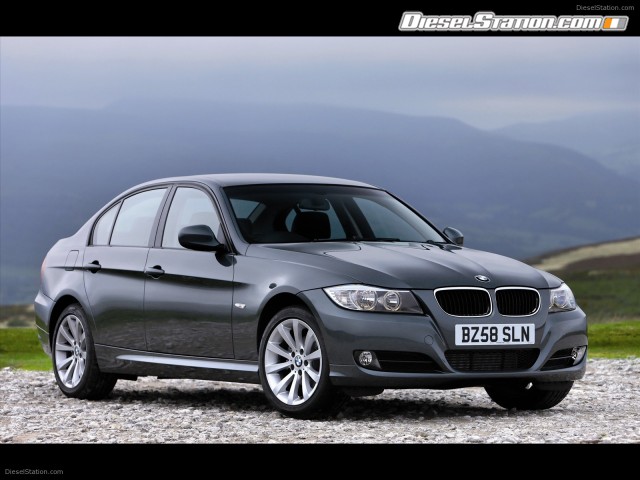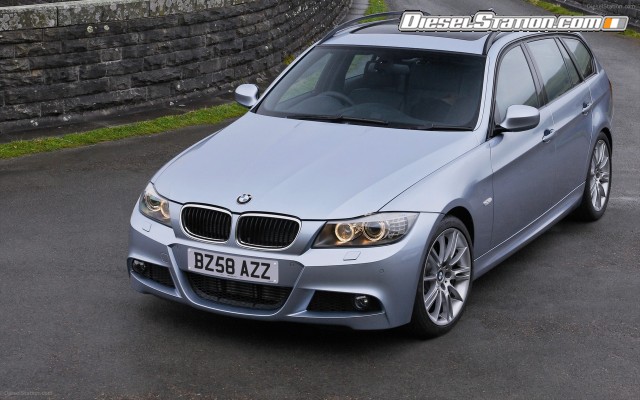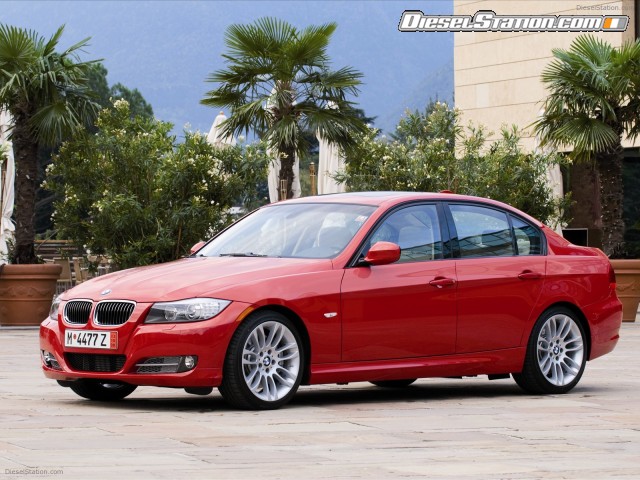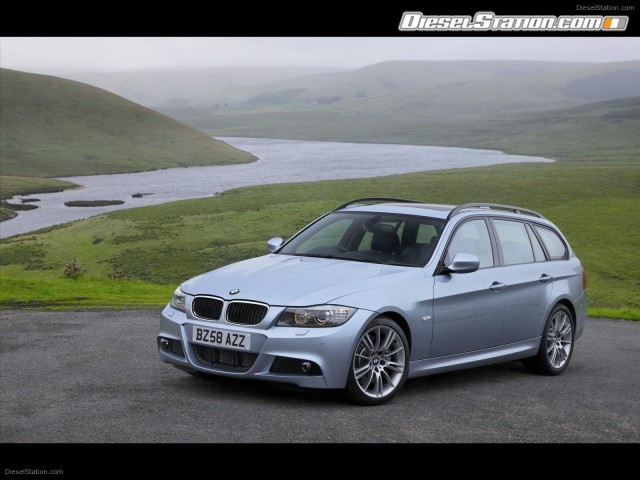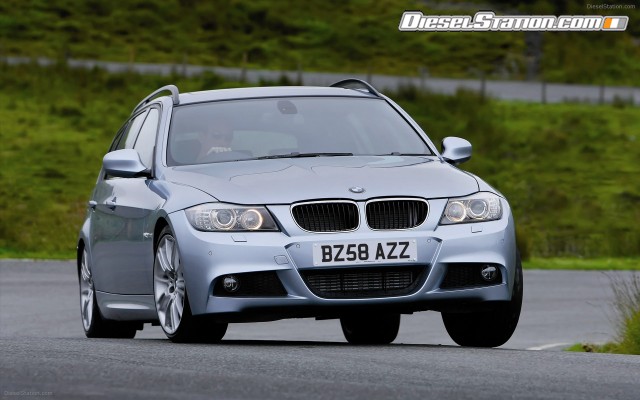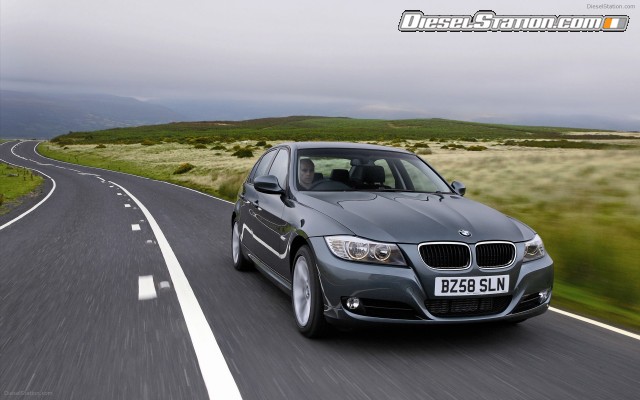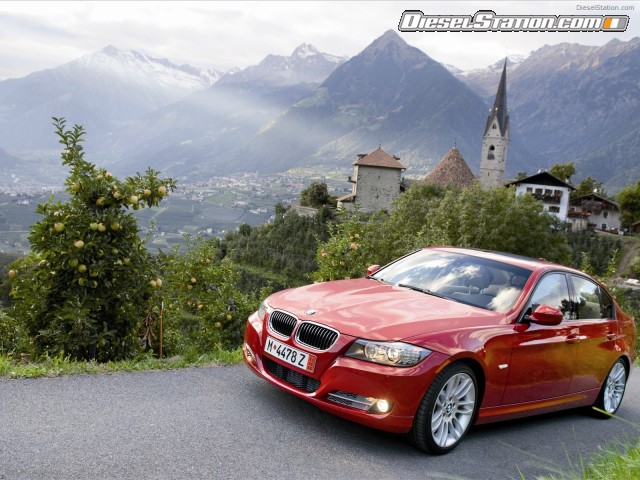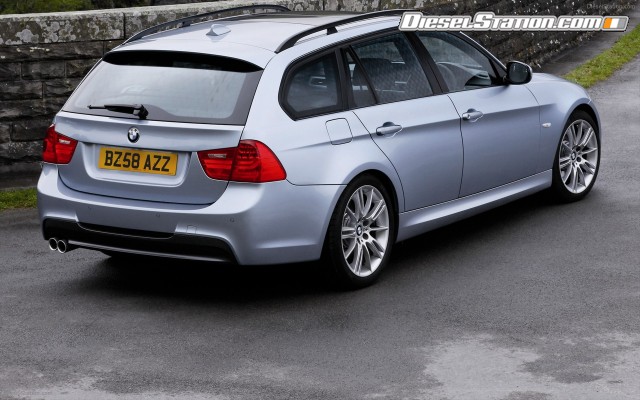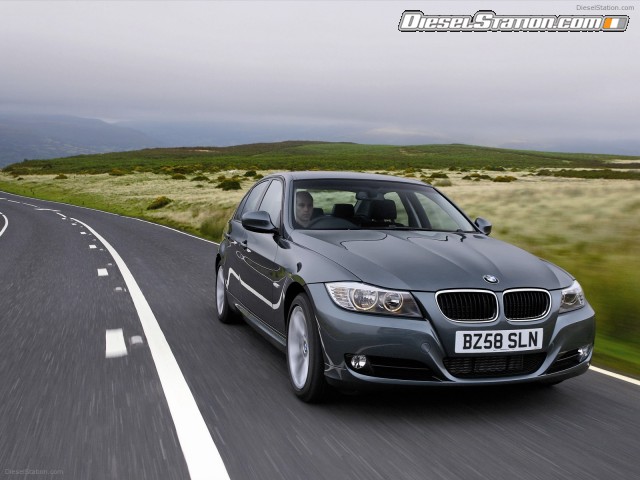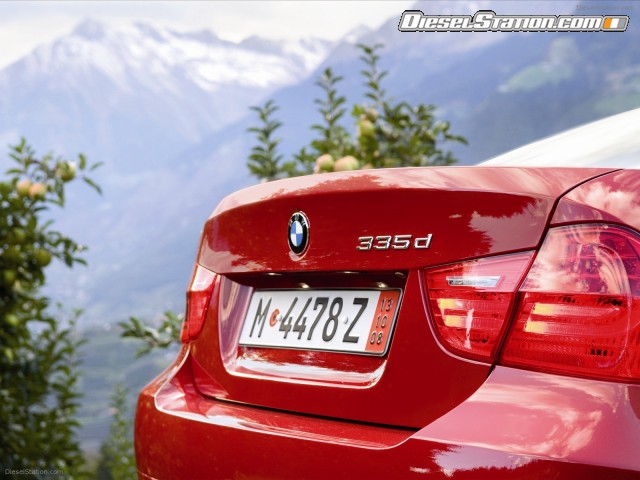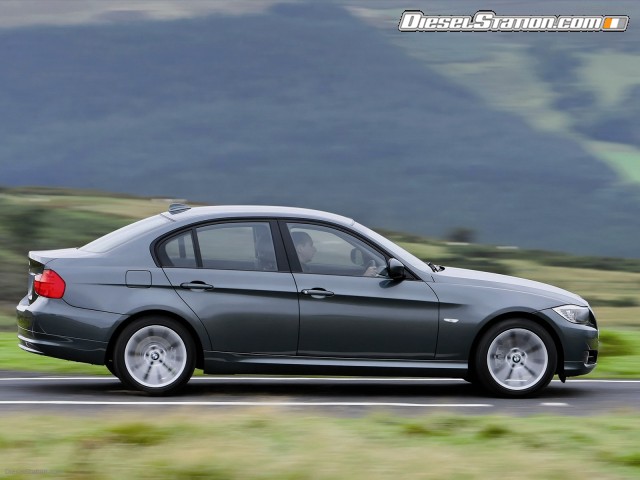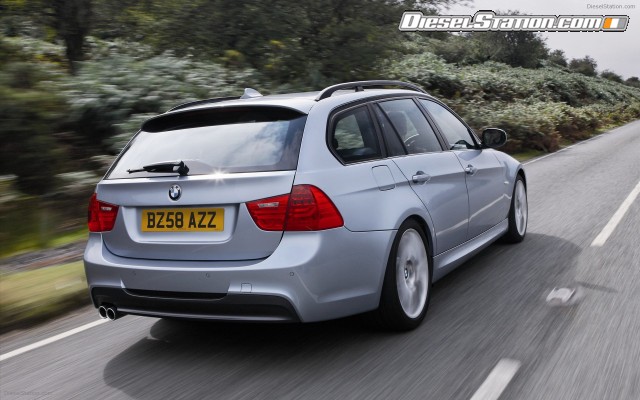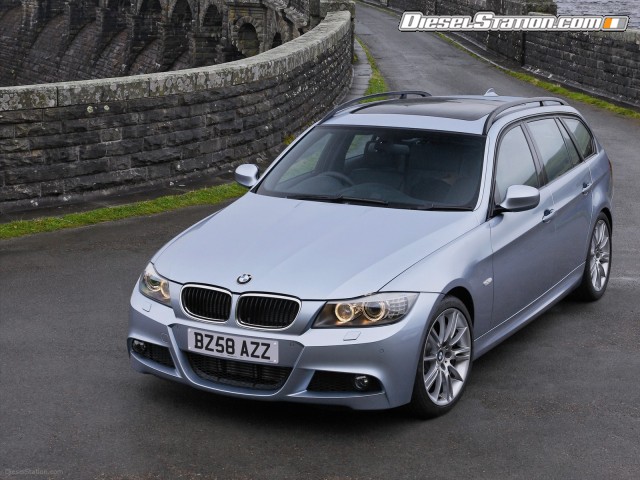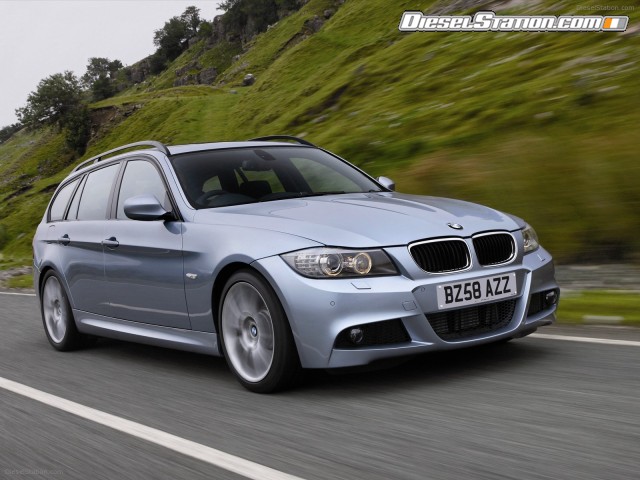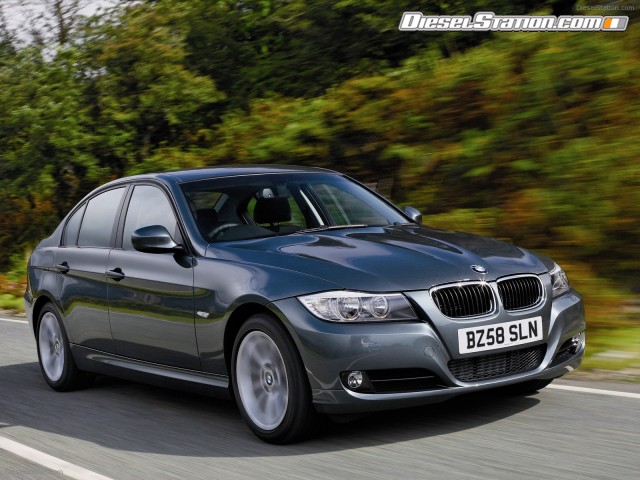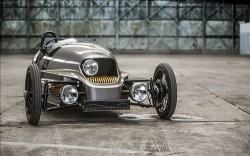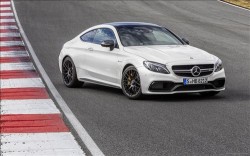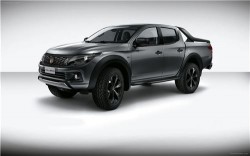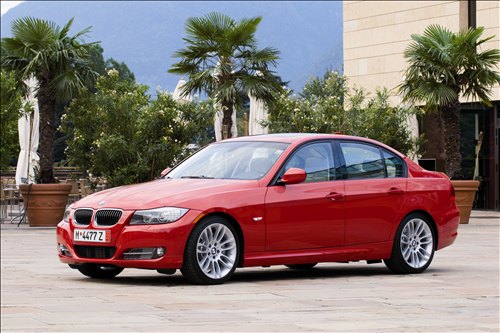The new mid-life refresh of the fifth generation BMW 3 Series is set to maintain BMW as the number one manufacturer of premium cars. With its unsurpassed driving dynamics, executive class refinement and technological innovation, the 3 Series has defined the compact executive segment.
The BMW 3 Series comes with a choice of award-winning powerplants. The latest engine to be introduced to the 3 Series is an all-new 3.0-litre six-cylinder diesel engine that records 245hp and 520Nm of torque, but still posts a 49.6mpg combined consumption figure and an emissions figure of 152g/km.
The new BMW 3 Series.
• The new BMW 3 Series Saloon and the new BMW 3 Series Touring
extend their lead further in terms of driving dynamics, premium quality
and innovative technology.
• The new BMW 3 Series Saloon and the new BMW 3 Series Touring combine elegance with a driving experience which is unique within
the competitive field.
• The extended range of engines and the application of
BMW EfficientDynamics measures make the BMW 3 Series
the benchmark for sheer driving pleasure in combination
with exemplary fuel consumption and exhaust emission levels.
• A new vehicle front, a side view with greater emphasis of the
dynamically elongated line, the rear section has a broader effect
due to more detailed lines. New headlamps, rear lights with
new contours characteristic of the brand, innovative lighting technology
and 3D effects.
• Refinement of the interior trim with selected operating elements in a new design and newly harmonised choice of colours and materials. The characteristic combination of convex and concave surfaces characteristic
of the exterior is continued in the interior. Ergonomically optimised
positioning of the window lift operating panel on the driver side, new and enlarged storage facilities.
• New generation of the operating system BMW iDrive in conjunction with optional navigation systems: ergonomically optimised iDrive Controller
for function selection and control by means of turning, pressing and tilting movements, blind operation of buttons on the Controller for fast and intuitive menu selection. Freely programmable functional bookmarks for even easier operation. Navigation system Professional with extended functions for destination entry, trip planning and map display. For the first time, routes freely planned on the internet can be fed into the navigation system using BMW ConnectedDrive. BMW ConnectedDrive world premiere: unlimited internet use inside the vehicle as an optional extra.
• Newly developed in-line 6-cylinder diesel engine in the BMW 330d: aluminium crankcase, common rail direct injection of the third generation with piezo injectors and maximum injection pressure of 1,800 bar, turbocharger with variable turbine geometry, output: 180 kW/245 bhp, maximum torque: 520 Nm, diesel particulate filter and oxidation
catalytic converter as standard, exhaust gas norm EU 5, optional
BMW BluePerformance technology with NO X storage catalytic converter
for the reduction of nitrogen oxide emissions as a requirement for adherence to the threshold levels of the planned exhaust gas norm EU 6.
• Variety of engines which is unique within the vehicle segment: five petrol and five diesel engines, with output ranging from 105 kW/143 bhp in
the BMW 318i and BMW 318d to 225 kW/306 bhp in the BMW 335i.
All engine types with BMW EfficientDynamics measures: model-
specific use of Brake Energy Regeneration, Auto Start/Stop Function,
Shift Point Display, needs-related control of auxiliary units and active aerodynamics with Automatic Air Intake Flaps. All engine types with unsurpassed fuel consumption and exhaust emission levels as compared
to the relevant competitors. BMW 318d, BMW 320d, BMW 330d
and BMW 330xd are within the threshold levels of the future exhaust
gas norm EU 5.
• 6-speed automatic transmission with optimised shift dynamics and minimised converter slip now optionally available for the BMW 318d too.
• Optimised all-wheel drive BMW xDrive enhances driving stability, driving dynamics and traction. New additional DSC function with controlled
brake intervention including torque compensation increases driving stability on bends. BMW xDrive now optionally available for five engine types
of the BMW 3 Series Saloon and the BMW 3 Series Touring, also for the BMW 320xd – the first ever combination of BMW xDrive with a
4-cylinder engine in the BMW 3 Series.
• For the first time, 7-speed sports automatic transmission with double clutch for the models BMW 335i Coupé and BMW 335i Convertible. The world's first 7-speed double clutch transmission designed for high perfor-
mance engines, shifting without interruption of traction for unequalled dynamic acceleration, optionally automated or manual, unique combination of the comfort of an automatic transmission with maximum dynamic performance, further optimised acceleration and fuel consumption figures.
• Comprehensive safety concept with extremely solid body structure, defined impact paths, selective use of high-strength steels and special deformation elements. Six airbags, 3-point automatic belts and headrests for all seats
as well as crash-active headrests for the front seats so as to reduce the risk of head injury in the event of a rear-on collision as standard.
• Engine types:
BMW 335i:
in-line 6-cylinder petrol engine with Twin Turbo and direct injection
(High Precision Injection),
capacity: 2,979 cc, output: 225 kW/306 bhp at 5,800 rpm,
max. torque: 400 Nm at 1,300–5,000 rpm,
acceleration [0–100 km/h]: 5.6 seconds (Touring: 5.7 seconds),
maximum speed: 250 km/h,
average fuel consumption according to EU:
9.1 litres/100 kilometres (9.3 litres),
CO 2 emissions according to EU: 218 g/km (222 g/km).
BMW 330i:
in-line 6-cylinder-petrol engine with direct injection,
capacity: 2,996 cc, output: 200 kW/272 bhp at 6,700 rpm,
max. torque: 320 Nm at 2,750–3,000 rpm,
acceleration [0–100 km/h]: 6.1 seconds (Touring: 6.2 seconds),
maximum speed: 250 km/h,
average fuel consumption according to EU:
7.2 litres/100 kilometres (7.3 litres),
CO 2 emissions according to EU: 173 g/km (175 g/km).
BMW 325i:
in-line 6-cylinder-petrol engine with direct injection,
capacity: 2,996 cc, output: 160 kW/218 bhp at 6,100 rpm,
max. torque: 270 Nm at 2,400–4,200 rpm,
acceleration [0–100 km/h]: 6.7 seconds (Touring: 6.9 seconds),
maximum speed: 250 km/h (248 km/h),
average fuel consumption according to EU:
7.1 litres/100 kilometres (7.2 litres),
CO 2 emissions according to EU: 170 g/km (173 g/km).
BMW 320i:
in-line 4-cylinder petrol engine with direct injection,
capacity: 1,995 cc, output: 125 kW/170 bhp at 6,700 rpm,
max. torque: 210 Nm at 4,250 rpm,
acceleration [0–100 km/h]: 8.2 seconds (Touring: 8.4 seconds),
maximum speed: 228 km/h (226 km/h),
average fuel consumption according to EU:
6.1 litres/100 kilometres (6,2 litres),
CO 2 emissions according to EU: 146 g/km (148 g/km).
BMW 318i:
in-line 4-cylinder-petrol engine with direct injection,
Capacity: 1,995 cc, output: 105 kW/143 bhp at 6,000 rpm,
max. torque: 190 Nm at 4,250 rpm,
acceleration [0–100 km/h]: 9.1 seconds (Touring: 9.5 seconds),
maximum speed: 210 km/h (210 km/h),
average fuel consumption according to EU:
5.9 litres/100 kilometres (6.0 litres),
CO 2 emissions according to EU: 142 g/km (144 g/km).
BMW 335d:
in-line 6-cylinder-diesel engine with all-aluminium crankcase,
common rail direct injection of the third generation and
Variable Twin Turbo,
capacity: 2,993 cc, output: 210 kW/286 bhp at 4,400 rpm,
max. torque: 580 Nm at 1,750–2,250 rpm,
acceleration [0–100 km/h]: 6.0 seconds (Touring: 6.1 seconds),
maximum speed: 250 km/h,
average fuel consumption according to EU:
6.7 litres/100 kilometres (6.8 litres),
CO 2 emissions according to EU: 177 g/km (178 g/km).
BMW 330d:
in-line 6-cylinder-diesel engine with all-aluminium crankcase,
common rail direct injection of the third generation and turbocharger
with variable turbine geometry
capacity: 2,993 cc, output: 180 kW/245 bhp at 4,000 rpm,
max. torque: 520 Nm at 1,750–3,000 rpm,
acceleration [0–100 km/h]: 6.1 seconds (Touring: 6.2 seconds),
maximum speed: 250 km/h,
average fuel consumption according to EU:
5.7 litres/100 kilometres (5.9 litres),
CO 2 emissions according to EU: 152 g/km (155 g/km).
BMW 325d:
in-line 6-cylinder-diesel engine with all-aluminium crankcase,
common rail direct injection of the third generation and turbocharger
with variable turbine geometry
capacity: 2,993 cc, output: 145 kW/197 bhp at 4,000 rpm,
max. torque: 400 Nm at 1,300–3,250 rpm,
acceleration [0–100 km/h]: 7.4 seconds (Touring: 7.6 seconds),
maximum speed: 235 km/h (233 km/h),
average fuel consumption according to EU:
5.7 litres/100 kilometres (5.9 litres),
CO 2 emissions according to EU: 153 g/km (155 g/km).
BMW 320d:
4-cylinder diesel engine with all-aluminium crankcase,
common rail direct injection of the third generation and turbocharger
with variable turbine geometry
capacity: 1,995 cc, output: 130 kW/177 bhp at 4,000 rpm,
max. torque: 350 Nm at 1,750–3,000 rpm,
acceleration [0–100 km/h]: 7.9 seconds (Touring: 8.1 seconds),
maximum speed: 230 km/h (228 km/h),
average fuel consumption according to EU:
4.8 litres/100 kilometres (4.9 litres),
CO 2 emissions according to EU: 128 g/km (130 g/km).
BMW 318d:
4-cylinder diesel engine with all-aluminium crankcase,
common rail direct injection of the third generation and turbocharger
with variable turbine geometry
capacity: 1,995 cc, output: 105 kW/143 bhp at 4,000 rpm,
max. torque: 300 Nm at 1,750–2,500 rpm,
acceleration [0–100 km/h]: 9.3 seconds (Touring: 9.6 seconds),
maximum speed: 210 km/h (210 km/h),
average fuel consumption according to EU:
4.7 litres/100 kilometres (4.8 litres),
CO 2 emissions according to EU: 123 g/km (125 g/km).





